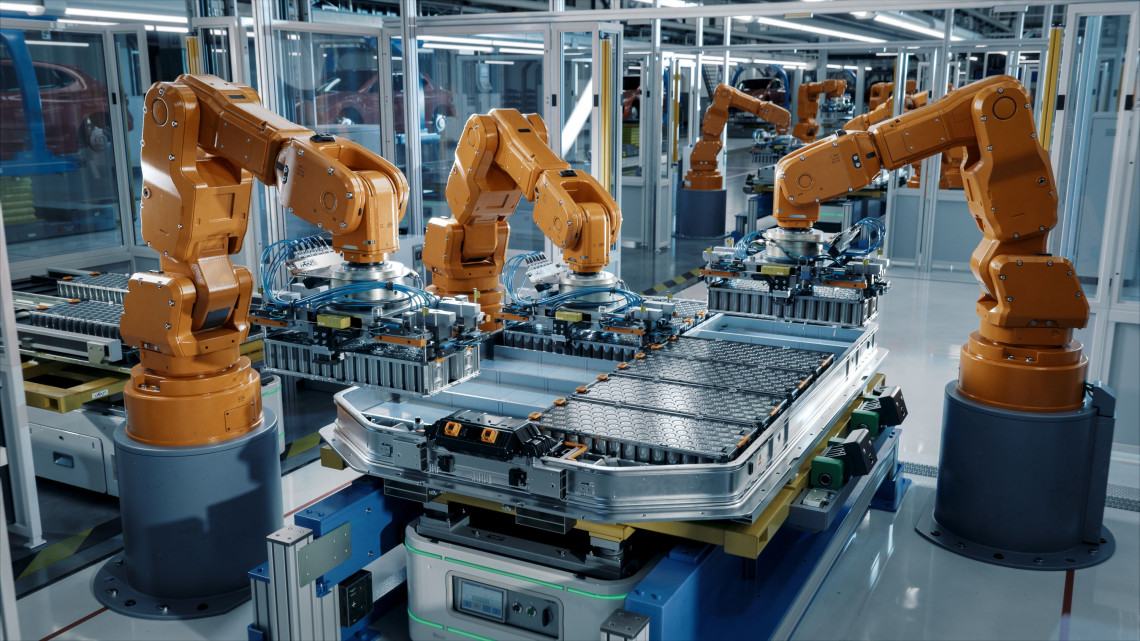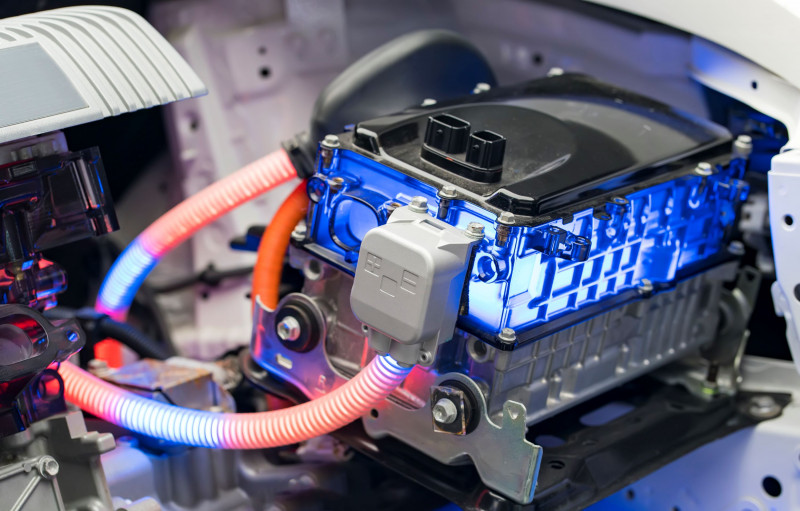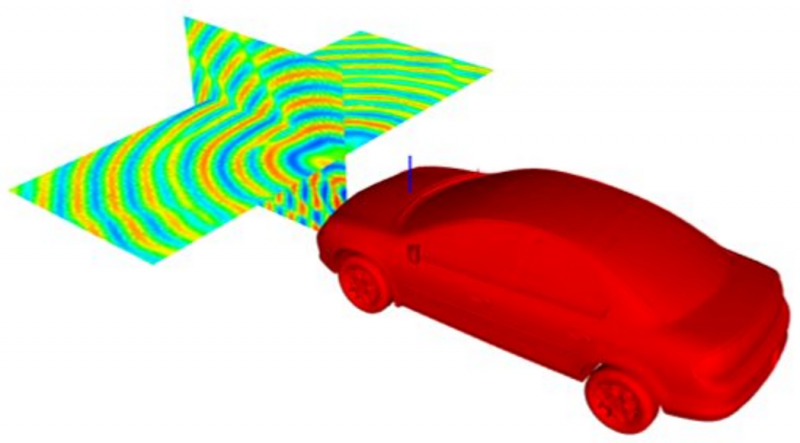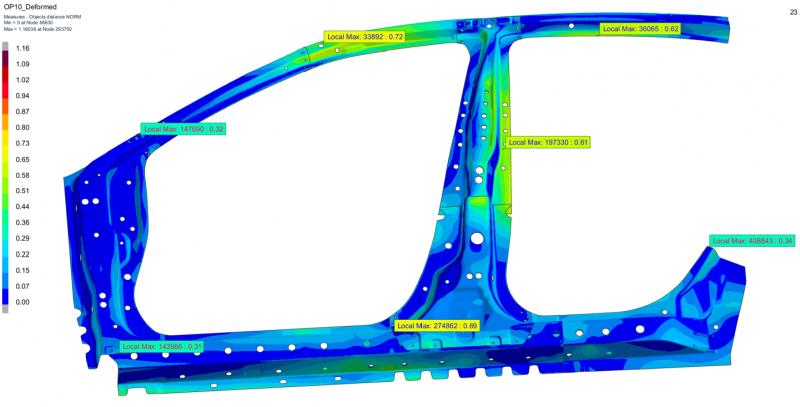How does EV Manufacturing and Design differ from Traditional Vehicles?
Can Virtual Prototyping Software Make the Transition Easier?

The transition from Internal Combustion Engine (ICE) vehicles to Electric Vehicles (EVs) has led to a transformative shift in industry.
Many established automotive manufacturers are introducing new EV models across their car, van, bus, and HGV ranges, alongside an increasing number of new start-ups entering the market. The aerospace industry is advancing the development of eVTOL aircraft, and heavy machinery manufacturers are adapting construction vehicles such as excavators, wheel loaders and forklifts to be electric. With the ever-growing selection of makes and models available today, and many more to come, the possibility that we all may be using EVs in the future is closer to reality than ever.
This change is not only visible in the driving experience but also in the design and manufacturing processes. EVs require unique components like batteries and drive units, and their assembly is often simpler than that of ICE vehicles. This evolution has opened new opportunities for startups and has markedly changed the industry's supply chain. Now, let's delve deeper into the distinct aspects of EV design and manufacturing.
Understanding the EV Industry
The EV industry, propelled by a combination of technological, environmental, and socio-economic factors, is growing rapidly. As more companies enter the market, they face significant challenges such as the high cost of establishing their own manufacturing facilities, scalability, and efficiency. Simultaneously, the market presents immense opportunities for manufacturers who are willing to adapt and invest early.
Key constituents that define an EV are unique components like batteries and drive units which are different from their ICE counterparts. The rapid growth of EVs has sparked fast-paced processes that transform ideas into tangible products powering these vehicles.
What is the Impact of Electric Vehicles on Traditional Manufacturing?
The rise of EVs has significantly impacted traditional manufacturing, necessitating a paradigm shift in production processes and supply chain structures. Traditional manufacturers are now grappling with the need to adapt their manufacturing plants for EV production, which involves a significant investment in new machinery and retraining of personnel.
EVs require fewer parts compared to ICE vehicles, leading to a potential reduction in assembly line workers. However, new roles are emerging in battery production and management, requiring a shift in the workforce's skill set.
The transition also implies that some traditional components, such as exhaust systems and fuel injectors, become obsolete in the EV context, leading to a potential decline in these sectors of the parts industry. Conversely, the demand for EV-specific parts, such as electric motors and battery systems, is skyrocketing.
Additionally, the transition to EVs is intensifying the competition among traditional OEM's and EV startups. Traditional manufacturers must leverage their production expertise and resources to stay competitive in the evolving landscape.
This change has also prompted manufacturers to rethink their supply chains, with a greater focus on securing materials for lithium-ion batteries, such as lithium and cobalt, and new lightweight materials to be used in the manufacturing of a vehicle body and chassis, which is reshaping supply chains to ensure a stable supply of these critical materials.
New Entrants and Startups in the EV Market
The EV market is seeing a surge of new entrants and startups, each vying to make their mark. Venturing into the EV landscape presents fewer barriers to entry compared to traditional manufacturing, paving the way for innovative players. These startups often leverage new technologies and novel approaches to design and manufacturing, introducing fresh competition for established players.
These new entrants are not just manufacturing EVs, but also developing and refining EV-related technologies. Their contributions are vital in accelerating the pace of EV development and propelling the industry forward.

What are the main differences in the EV Manufacturing Process?
Designing Electric Vehicles
When it comes to designing electric vehicles, the process begins with conceptualization and design sketches. Engineers and designers work collaboratively to create innovative concepts for various components such as e-batteries, motors, power electronics, and charging systems. They also consider the increasing complexity of electrical systems and high-voltage components.
The focus used to be on protecting the engine, but this has now shifted to protecting the batteries, which means that specific attention is given to the design of EV batteries due to their crucial role in the performance and efficiency of EVs. Factors such as scalability, cost of manufacture, and durability influence the design choices for EV batteries.
There is also the fact that an EV chassis is designed completely differently, often using a ‘skateboard’ approach to accommodate the battery, which, again brings challenges in optimizing vehicle performance and must take into account the manufacturing considerations for battery integration, the need for production flexibility, and sustainability in the design/engineering process.
Furthermore, design approaches need to accommodate the rapidly evolving EV market and ecosystem, including the ongoing trends in EV architecture.
Production and Assembly of EVs
The production and assembly of EVs are different from traditional vehicles due to the unique components and materials involved.
In the drive to increase battery range and offset the additional weight of the large batteries EVs require, manufacturers are having to experiment with new lightweight materials and new production concepts, such as giga casting, to reduce chassis weight as much as possible.
The Move Towards Mega Casting
Mega castings are increasingly utilized to reduce weight, improve structural integrity, and streamline assembly processes. By consolidating multiple smaller components into a single mega casting, automakers can achieve significant weight savings while enhancing overall vehicle rigidity and crashworthiness.
Additionally, mega castings offer benefits such as reduced manufacturing complexity, lower assembly costs, and improved scalability, making them an attractive solution for EVs. But mega casting brings its own challenges in terms of how to successfully manufacture vehicles using those new materials, and ensuring structural safety, rigidity, and strength.
Assembling an EV
The assembly of EV components, such as the electric drivetrain and onboard charger requires highly automated and flexible production lines due to the distinct design and construction of EVs.
The vehicle assembly, integrating the battery pack, electric motor, and other components into the vehicle chassis requires careful coordination and attention to detail to ensure the vehicle's performance and safety.
Lightweight materials, such as high-strength steels and aluminum, pose additional challenges as advanced materials are harder to work with due to high springback, and they can exhibit unexpected rupture behavior during crash loading.
Throughout the entire process, the role of automation and data-driven improvement is crucial to enhancing the precision, efficiency, and scalability of EV production.
Quality Control in EV Manufacturing
Quality control in EV manufacturing is a multi-faceted and rigorous process. It involves meticulous inspection and testing of various components, especially the critical parts like electric motors and batteries. Quality control measures must ensure that all EV components meet the necessary performance demands and safety considerations.
Automated quality control is increasingly implemented, particularly for complex parts and systems that require high precision. These automation technologies, such as robot-mounted optical scanners, can efficiently detect potential defects and maintain consistency in the manufacturing process.
In addition, stringent testing protocols are employed during and after the production process. This includes the testing of raw materials, components, and the final battery assembly to validate their quality and reliability. Furthermore, the importance of standardization and homogeneity in the materials manufacturing process cannot be underestimated. It guarantees consistency in the production of EVs, thereby enhancing the overall quality of the final product.
It's noteworthy that quality control in EV manufacturing isn't confined to the factory floor. It extends to encompass the entire production process, from the extraction of raw materials to the final assembly of the vehicle.
Lastly, quality control in EV manufacturing also includes continuous monitoring and improvement of the manufacturing processes. This is made possible through the use of advanced data analytics and AI technologies that can detect inefficiencies and suggest improvements. Overall, quality control is crucial in maintaining high standards of safety, reliability, and performance in EVs.
Battery Technology in EV Manufacturing

Car Battery Design and Production
The design and production of car batteries, especially for EVs, is a complex process that involves several crucial steps. Initially, the design phase includes considerations like size, capacity, energy density, and life cycle. The aim is to maximize efficiency while minimizing weight and cost. Battery design also involves thermal management to prevent overheating and ensure safe operation.
Once the design is finalized, the battery production process begins, typically in dedicated factories or gigafactories. Individual cells are manufactured first, consisting of anode, cathode, and electrolyte. Rigorous tests are conducted on these cells for quality and performance. Then, cells are assembled into modules and finally into a battery pack. This assembly process requires high precision and strict quality control to ensure safety and performance. Automation plays a substantial role in this phase, enhancing efficiency and reducing errors.
It's important to note that sustainability is a significant aspect of battery design and production. This includes measures to reduce waste and energy consumption and recycling initiatives for end-of-life batteries.
In the context of EVs, battery design and production are key determinants of the vehicle's performance, range, and cost. Therefore, ongoing advancements and innovations in this area are pivotal for the future growth of the EV industry.
What is the Future of EV Manufacturing?
EVs are important to the future of the automotive, aerospace, and heavy machinery industries, and to the protection of the environment, and their evolution and widespread public acceptance hold great promise as consumption of decreasing fossil fuels and concerns over air and noise pollution are major issues today.
There are several things that are certain. The EV industry is here to stay — and the list of EV manufacturers will continue to grow. New and better technologies will continue to be developed — and charging methods will improve and be faster. As the EV market grows worldwide, the positive effects of moving to electric vehicles will be reflected in the environment and our everyday lives for years to come.
Demand Forecast for Electric Vehicles
The demand for electric vehicles (EVs) is projected to skyrocket in the coming years. This rapid growth is a result of several factors:
- Government policies and subsidies are playing a key role in promoting EV adoption. Many governments are setting ambitious goals for EV sales and providing financial incentives to consumers and manufacturers.
- The declining cost of EV batteries is making EVs more affordable. Battery cost is a significant factor in the total cost of an EV, and decreases in battery prices are expected to make EVs cost-competitive with ICE vehicles.
- Increased public awareness about climate change and the environmental benefits of EVs is also driving demand.
- Technological advancements in EVs, such as improved battery range and shorter charging times, are making EVs more attractive to consumers.
- The growth of charging infrastructure is helping to alleviate 'range anxiety' and making EVs a more practical choice for many consumers.
Despite these positive trends, there are also challenges that could affect the demand forecast for EVs. These include the need for further improvements in battery technology, the availability of critical raw materials for battery production, and the need for more charging infrastructure.
Vehicle Electrification Trends to Watch
As the electrification of vehicles continues to accelerate, Virtual Prototyping technology is becoming increasingly pivotal.
Virtual Prototyping technology is reducing the need to build physical prototypes of vehicle designs by enabling digital test and simulation in areas such as crash testing, vibroacoustics, body and chassis manufacturing, and assembly and maintenance processes.
In EV manufacturing, Virtual Prototyping is not just a trend to watch, but a game-changer shaping the future of the industry.
What Role will Virtual Prototyping have in EV Production?
Virtual Prototyping is playing a transformative role in the production of Electric Vehicles (EVs). Manufacturers are leveraging this technology to enhance efficiency, productivity, and safety in their operations.
Virtual Prototyping involves creating digital representations of physical products and systems, allowing engineers to simulate, test, and validate vehicle components in a virtual environment before physical prototypes are created. The ability to test and iterate designs quickly and cost-effectively is a significant advantage of Virtual Prototyping.
In the context of EVs, this approach is particularly beneficial due to the complex interplay between electrical and mechanical components. For instance, Virtual Prototyping can aid in optimizing aspects like cell selection and thermal management in battery design.
Virtual Prototyping also aids in addressing design challenges unique to EVs, such as achieving the right balance between performance, driving range, cost, and efficiency. This approach is instrumental in managing the complexity of EV design, and it's helping in accelerating EV development.
Furthermore, Virtual Prototyping empowers EV manufacturers to leverage the power of simulation for comprehensive examination of product performance and smart manufacturing. This approach is expected to play a crucial role in the foreseeable future as the EV industry continues to grow and evolve.
How can ESI accelerate your EV product development?
ESI provides solutions to help navigate the complex landscape of EV manufacturing, from design to production, and are positioned to support EV manufacturers in adapting to such a rapidly evolving industry.
Take a look at the areas where you could integrate ESI's Virtual Prototyping solutions into your EV product development:
Crash, Safety, Strength and Dynamics
Vehicle designers must engineer new concepts faster while proposing innovative solutions to answer e-mobility challenges. Virtual simulation helps predict battery safety, performance, and range, test the structural integrity of the vehicle body and battery systems, and assess the impact of water.


Electric vehicles operate quietly, making unwanted vibrations and acoustic disturbances more noticeable, but the necessity of meeting pass-by-noise regulations remains a significant challenge. Acoustic engineers must also devise strategies to intentionally introduce noise in the absence of engine sounds by implementing effective acoustic warning systems in traffic scenarios (AVAS). Virtual prototyping enables engineers to simulate and test noise levels to enhance the overall auditory experience and safety of electric vehicles.
Body and Chassis Manufacturing
Reducing vehicle weight is essential for electric vehicle range. However, transitioning from the traditional 100% steel body manufacturing to multi-material strategies presents challenges for both manufacturability and final product performance, but virtual simulation can play a pivotal role in enabling this transition.


Virtual Product and Process Validation
With EVs, traditional systems integration and packaging practices in product design are being challenged, whereas the evaluation of human interactions with products in processes such as assembly or maintenance are often left until later stages, when physical prototypes become available. Using virtual reality (VR) software to power collaborative virtual workflows in a physically realistic environment provides valuable insights early on.
ESI’s simulation software empowers you to create and analyze intricate EV components without physical constraints, dive deep into immersive virtual environments, and ensure the reliability and safety of your EVs.
As the EV market continues to evolve at a rapid pace, the competitive edge offered by virtual prototyping becomes increasingly evident. It enables manufacturers to stay ahead of the curve, swiftly adapting to market demands and technological advancements.
To find out more visit our dedicated EV webpage or download the 'How is Virtual Prototyping Accelerating Electric Vehicle Development?' eBook.
Katharine Edmonds is a Content Marketing Specialist at ESI Group, and has spent the past 9 years working in marketing and communications for SaaS providers in the engineering and manufacturing industries. Katharine leans on her knowledge and experience of CAD, PLM and eXtended Reality (XR) technologies to create engaging and informative content that champions the benefits of virtual prototyping, and bridges the gap between complex technical subjects and a broader audience.